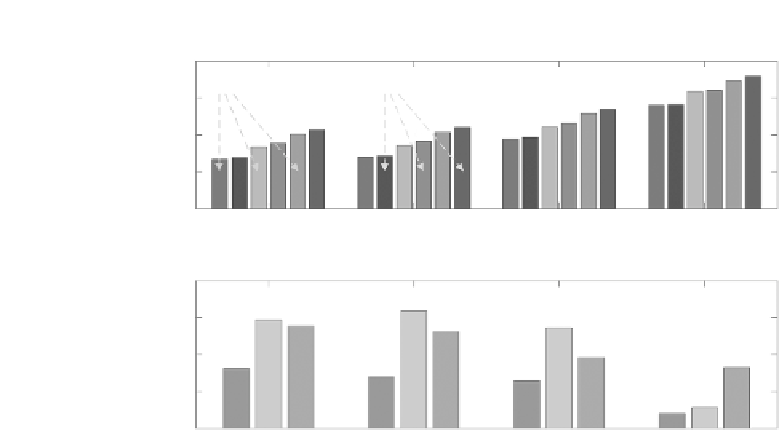Environmental Engineering Reference
In-Depth Information
Performance of Parallel
S
+
T
Energy Sources
800
DT10
P
HEH,actual
P
HEH,MPPT
DT7
DT5
600
DT10
DT7
DT10
DT10
DT5
400
DT7
DT7
DT5
DT5
200
0
380 lux
425 lux
680 lux
1010 lux
Solar Irradiance (lux)
(a)
8
6%
6
4
3%
2
DT5
DT7
DT10
DT5
DT7
DT10
DT5
DT7
DT10
DT5
DT7
DT10
0
380 lux
425 lux
680 lux
1010 lux
Solar Irradiance (lux)
(b)
FIGURE 5.29
Performance of an HEH system in parallel configuration.
and ultralow-power fixed reference voltage method for the hybrid energy
harvester.
5.3.5.2 Power Conversion Efficiency of the HEH System
The power conversion efficiency of the HEH system is another important
investigation being carried out. Other than the regulating buck converter,
there are two main contributors of power losses to the HEH system; the boost
converter itself, which acts as an MPP tracker, and its associated sensing,
control, and PWM generation circuits. The efficiency of the boost converter
conv
can be expressed as a function of its output load power
P
load
over its input
DC power
P
dc
under varying solar irradiance, temperature differences
T
,
and loading
R
L
conditions. Take, for example, at lux illumination, temperature
difference and output load resistance of 380 lux, 5 K, and 68 k
,respectively,
the efficiency of the boost converter is given by
V
out
/
P
out
P
in
∗
R
load
V
in
I
in
conv
=
100%
=
∗
100%
(5.12)
95
V
2
4
.
/
68 k
=
A
∗
100%
=
91
.
8%
3
.
6
V
∗
109
and the calculated efficiency of 91.8% is plotted in
Figure 5.30
. For all other
solar irradiances, temperature differences, and loading conditions, the effi-
ciencies of the boost converter are calculated using
Equation 5.12
, and the










Search WWH ::

Custom Search